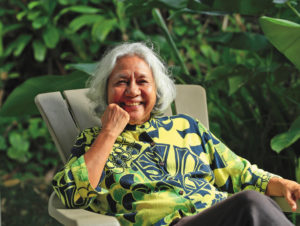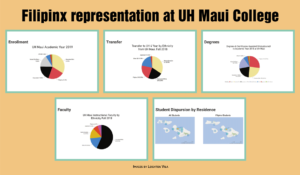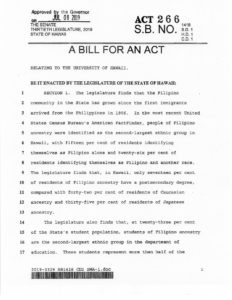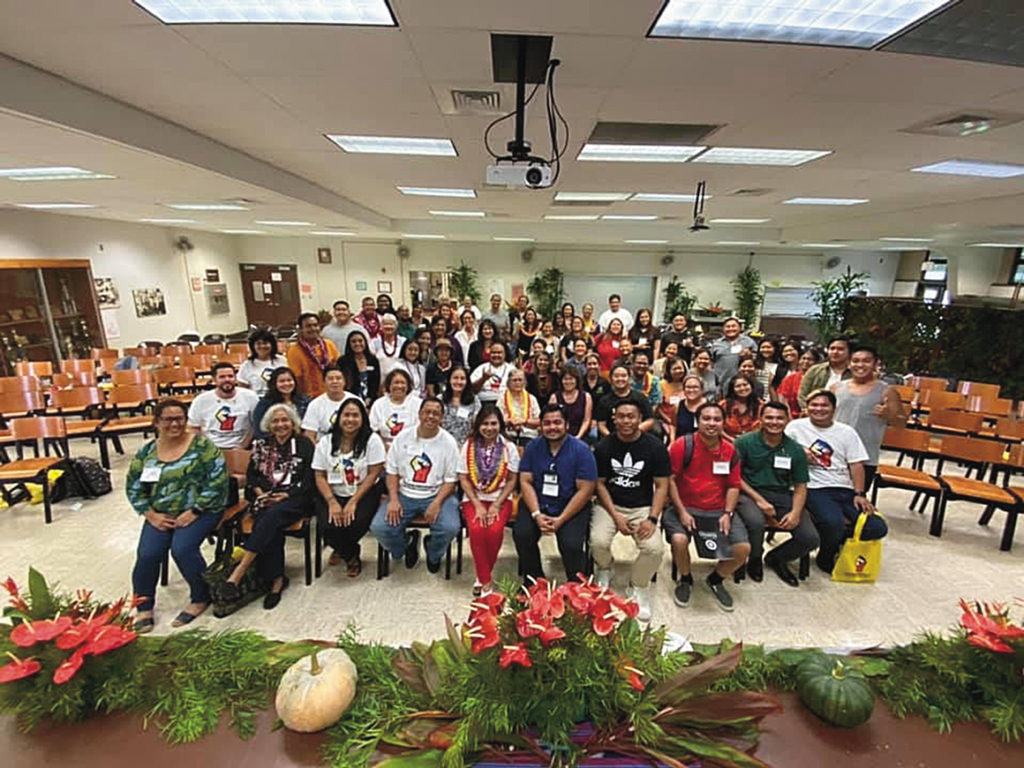University of Hawai‘i Pamantasan Council Gets Funding
“I have come to better understand my own ethnic heritage and come to appreciate the diversity Filipinos bring to Hawai‘i thanks to the encouragement and support from my colleagues in Pamantasan,” said Christopher Yanuaria, M.S.W. in testimony before the Hawai‘i Legislature. “If it was not for my parents, family, and others like my colleagues, who supported my academic and professional endeavors, I do not think I would have gotten to where I am today. My hope is that other Filipinos can have the same opportunity as I did. For this reason, I urge you to please support SB 1418, SD1, HD1.” Yanuaria, who was born and raised in Kahului, is currently the University of Hawai‘i at Manoa’s Prevention Awareness Understanding Violence Program Coordinator.

Amefil “Amy” Agbayani, Ph.D. who worked at the University of Hawai‘i for more than forty years and is now an Emeritus Assistant Vice Chancellor for Student Diversity, explained the need for the passage of SB 1418 in her testimony: “The Filipino students, their families and the community seek access to higher education. The very large population of Filipinos in the state and the public schools means that DOE and UH can meet their mission by providing programming to increase the Filipino UH graduates who can be part of our state’s educated workforce and active citizens in our community.”
With the support of the Filipino community, the University, and the Legislature, a few months ago, Governor David Ige signed into law as Act 266 (SB No. 1418, SD1, HD1, CD 1) which appropriated $195,000 in each fiscal year to fund for the first time two full-time equivalent positions for the University of Hawai‘i Pamantasan Council.

Earlier this month, the UH Pamantasan Council was hosted on Maui by University of Hawai‘i Maui College [“UH Maui College”] Chancellor Lui Hokoana and reviewed statistics focusing on Filipinx students at UH Maui College, where one of the full-time positions will be located. (As part of the effort to be gender neutral, Filipinx is now used by the University of Hawai‘i and others to refer to Filipino/a.)
The UH Pamantasan Council was formed in 1987 for the purpose “to review the status of Filipinos at the University of Hawai‘i and to make recommendations to increase their numbers and improve the academic success and careers of Filipinos and the quality of education for all students at the University.”
In the Spring of 1988, the Report of the University of Hawai‘i Task Force on Filipinos was published and titled Pamantasan, which means institute of higher learning. The Report focused on five areas: recruitment and retention of Filipino students in higher education; inclusion of Philippine or Filipino-related courses into the curriculum; Filipinos in the State Department of Education; employment of Filipinos in the professions; and relations between Philippine and U.S. institutions of higher education.
The Task Force specifically found that “Filipino students encounter numerous and varied barriers in seeking higher education, which result in their considerable under representation at the University, especially at UH-Manoa, UH-Hilo, and West O‘ahu College.” The Task Force made specific recommendations in the five areas but also made four other major recommendations, including “Interested members of the Task Force should be reappointed to form the Pamantasan Council. This group would work with community organizations, assist with the review, approval and implementation of the Task Force recommendations, and comment on University policies and procedures that impact on Filipino students and Philippine studies.”

Images by Leighton Vila
But “the Pamantasan Council has no budget, and is a volunteer organization comprised of UH students, staff, faculty, and administrators who are committed to access and diversity issues,” said Christine Quemuel, Ph.D. in testimony submitted in support of SB 1418. Quemuel is the Interim Assistant Vice Chancellor for Diversity and a member of the UH Pamantasan Council. The Pamantasan Council is “comprised of administrators, faculty, and staff from all ten campuses in the University of Hawai‘i System,” explains Quemuel. “The Pamantasan Council advocates for the representation of Filipinx students, staff, and faculty; the inclusion of Filipinx and Philippine content in university curricula; as well as supporting and recognizing Filipinx achievements in higher education.”
“Three decades after Pamantasan was formed, much work remains to be done,” said State Senator Gilbert Keith-Agaran, who represents Central Maui. “As recently reported, Filipinos, making up roughly a quarter of public school students, are the second largest ethnic group in the DOE. However, they continue to represent less than 1/7th of all students in the University of Hawaiʻi System. With most Filipinos enrolling in the community colleges, they remain under represented in our four-year institutions. Further, only 7 percent of all Hawaiʻi DOE teachers and 4 percent of faculty in the UH System have Filipino ancestry.” Keith-Agaran was one of the sponsors of SB 1418 and a member of the Senate Conference committee (representing the Senate Ways & Means committee) along with Higher Education Chair Donna Mercado Kim, who was the Senate’s lead conferee. State Representative Justin Woodson of Kahului (representing the House Lower & Higher Education committee) was one of the Conference Co-Chairs on the House side.

Act 266 states its purpose is to “provide additional resources to the University of Hawai‘i Pamantasan Council to help the State and the University of Hawai‘i meet strategic goals for access, diversity, and workforce.”
“The funding for the Pamantasan Council will better ensure that Filipino heritage, will perpetuate in the University of Hawai‘i system not only through the comradery but also course work focused on Filipino culture and history” said Woodson.
For the past thirty-one years, the Pamantasan Council held an annual conference, with the 2019 Conference hosted by Hawai‘i Community College and themed Sulong Sulong which means moving forward.
“I’ve been going to Pamantasan since 2011,” said UH Maui College alum JR Regalado. “What I like about the conference are the different workshops where students can choose to go based on their interest and get involved by interacting with other students from different campuses. The key note speaker, Dr. Kevin Nadal, delivered an important message that we should have more Filipinos to step up because of the need for more educational instructors to teach our fellow students here in Hawai‘i and across the U.S.”

At the UH Pamantasan Council meeting on Maui, Maui boy Leighton Vila, who is now a Title III (Native Hawaiian) Evaluator at Windward Community College, shared some interesting statistics:
• At UH Maui College, Filipinx students constitute 21.9% of the student body;
• Filipinx students succeed academically at UH Maui College, with the second highest GPA of 3.0;
• UH Maui College’s top feeder high schools are Maui High School (117), King Kekaulike High School (54), Baldwin High School (52), and Lahainaluna High School (36);
• The majority of students at UH Maui College (41.0%) reside in Kahului or Wailuku;
• In Fall 2018, Native Hawaiian students were the most likely to transfer to a four-year campus (43.33.9%) followed by Filipinx (28.22%) and Caucasian (28.22%);
• In 2017-18, Filipinx students had the highest graduation rates (219, 28.9%) followed by Native Hawaiians (195, 25.8%), and Caucasian students (145, 19.2%);
• Although 22% of the student body and nearly 30% of UH Maui College’s graduates were Filipinx, there are only four Filipinx instructional faculty (4.7%).
These statistics reveal the importance of having one of the two Pamantasan positions housed at UH Maui College. SB 1418 as introduced sought four positions but the Legislature approved only two. “We only got half the positions requested and only a portion of the funding in Act 266 so we’ll have to see if we can convince more of our colleagues of the need to address the disparity,” said Keith-Agaran.
